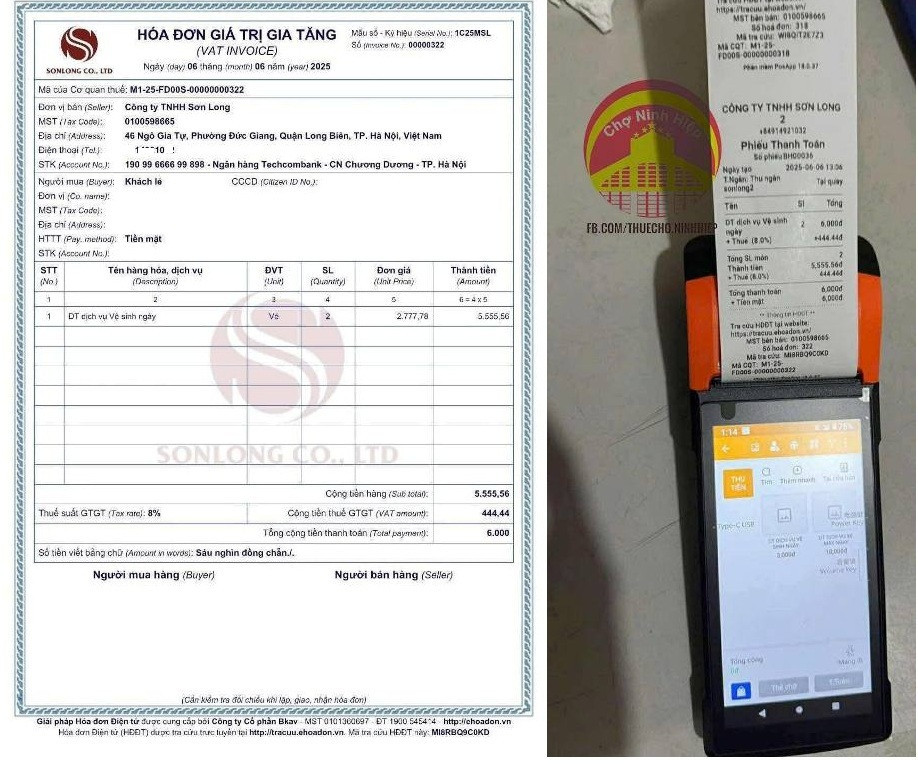A recent photo of a value-added tax (VAT) invoice worth just 6,000 VND (about $0.24) for bathroom services has sparked lively discussion online. Issued by Son Long Co., Ltd. on June 6, 2025, the invoice included 8% VAT for restroom use by two people, raising questions about the practicality and implications of issuing such small-value receipts.

A 6,000 VND VAT invoice for restroom use issued by Son Long Co. in Hanoi, shared widely on social media, highlights the real-world impact of Vietnam’s new digital invoicing regulations. Photo: Facebook
The invoice, generated from a cash register system and shared widely on Facebook, was confirmed by Lam Giang, an accountant at Son Long Co., Ltd. - the company that owns the Son Long Market Trade Center in Ninh Hiep, Gia Lam District, Hanoi.
Giang clarified that while the company has always issued VAT invoices, they previously consolidated them by day for services like restroom use and by month for vehicle parking. However, under a new government mandate effective from June 1, all invoices must now be issued electronically, individually for each customer transaction.
“The principle of invoicing remains the same,” Giang explained, “but the switch to per-use invoicing significantly increases costs. If we issue one invoice per day, it only costs one document. But if we serve several hundred restroom users daily, that’s several hundred invoices, requiring paper, machine maintenance, and more staff time.”
She added that although Son Long is committed to regulatory compliance, the transition has introduced new challenges. "Our network system is good, but it still lags at times. The invoicing software isn't fully stable, and many of our staff are older and struggle with using new machines. If we make a mistake, fixing the invoice is nearly impossible.”
To comply, the company had to invest in three new cash registers - one for the restroom area, one for the parking lot, and one for the accounting office - at an initial cost of nearly 40 million VND (around $1,570), not including recurring expenses for printing paper, additional invoice codes, and internet services.
“Before, a single invoice might cost us 300 VND (a little over one cent). Now, with hundreds or even thousands of invoices per day, we’re spending hundreds of thousands of VND daily just to issue receipts for parking and restroom services,” said Giang.
She also expressed environmental concerns: “Printing this many invoices creates unnecessary paper waste, especially when every market has to do the same.”
Nguyen Le